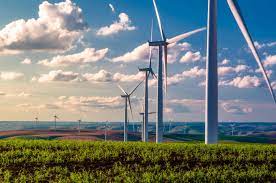Lebanon has been facing an energy crisis for several years, with regular blackouts leading to an overreliance on diesel generators for power. This is largely due to years of misspending public funds and underinvestment in the country’s energy infrastructure. Now, there are concerns that Lebanon’s ongoing conflict with neighbouring Israel could make it even more difficult to tackle the worsening energy and economic crises.
Lebanon has been facing a severe economic crisis for the last five years, owing largely to political instability, a financial crisis, and the Covid-19 pandemic. Unemployment rates have risen sharply, and the banking sector has been hit hard, with many losing confidence in the country’s financial institutions. Infrastructure development has lagged in response, primarily due to financing shortages. This has exacerbated the country’s energy crisis, with little public finance available for the state-owned electric company Électricité du Liban (EDL) to improve Lebanon’s energy system and limited interest from private and foreign investors due to ongoing economic and geopolitical instability.
In the summer of 2021, following years of on-and-off blackouts due to severe underinvestment in Lebanon’s ageing energy infrastructure, the country entered an energy crisis when the State became unable to secure the foreign currency needed to purchase fuel. Since then, the ESL has only been able to provide a few hours of electricity per day on average.
While the government has long been open to the development of Lebanon’s renewable energy capacity, it continues to rely heavily on fossil fuels for its power. In 2022, oil contributed 55 percent of Lebanon’s electricity generation, followed by solar PV (29 percent) and hydropower (16 percent). The government has introduced diverse energy policies over the last decade and a half to limited success.
Russia’s Crude Oil Shipments Slump
In 2010, the government launched the National Energy Efficiency and Renewable Energy Action, a mechanism to support the financing of green energy projects across the country. In 2023, the government introduced a new decentralised renewable energy law, which simplifies regulatory processes and ensures grid access for decentralised systems. It encourages private sector participation and helps local communities to generate and manage their own energy, thereby reducing reliance on the unstable national grid. The government is now drawing up the second National Renewable Energy Plan (NREAP 2024-2030), which could support the development of a strong green energy sector and grow Lebanon’s renewable energy capacity to contribute 40 percent of electricity consumption by 2030.
The government has aimed to diversify Lebanon’s energy mix in recent years to enhance energy security in recent years. To date, the government has signed power purchase agreements for 11 projects with a projected total of 165 MW of PV capacity. Meanwhile, private investment in rooftop solar projects has increased as citizens respond to several years of unstable energy provision, regular power cuts, and rising electricity costs, which have driven many to rely heavily on diesel generators for power.
A 2023 report from the NGO Human Rights Watch stated that between November 2021 and January 2022, Lebanese households allocated 44 percent of their monthly income to meet their electricity needs, spending mainly on keeping their generators running. However, private investment in solar energy has risen sharply in the last couple of years, as those with the means are investing in personal solar power systems to provide a more stable flow of electricity – a longer-term solution to the lack of power than generators. The solar sector has expanded significantly, from a capacity of 100 MW in 2016 to around 1,000 MW by 2023, with little oversight and regulation. This has led to severe energy inequality in Lebanon between those who can afford solar panels and those who cannot.
In addition to battling continued economic and energy crises, the Lebanese government must now find a way to support hundreds of thousands of people who have been displaced due to the ongoing conflict with Israel. Between mid-September and mid-November, around 1.2 million people were reported to have fled their homes because of the conflict.
Since the beginning of the conflict, losses suffered by the public water and energy sectors have been estimated at $480 million. The energy sector alone has suffered more than $320 million in losses, due to increased demand from displaced persons, infrastructure damage, and revenue losses. The government and EDL are under pressure to provide economic support and energy to displaced persons under an already overstrained system. The longer the conflict persists, the more likely that the government will be unable to meet even the basic needs of the Lebanese population without external economic intervention.
Despite the government’s support for the expansion of Lebanon’s renewable energy capacity, there has been little formal sectoral growth. The country’s solar energy capacity has, instead, grown largely thanks to small-scale private investment in response to the failure of the EDL to provide a stable flow of energy to consumers. Lebanon has faced an economic and energy crisis for five years, with no end in sight. Further, the forced displacement of over a million Lebanese due to the conflict with Israel is likely to exacerbate the crises unless the government can attract funding from foreign actors to support short- and long-term investment in energy capacity growth and distribution.

 Iran Energy News Oil, Gas, Petrochemical and Energy Field Specialized Channel
Iran Energy News Oil, Gas, Petrochemical and Energy Field Specialized Channel



